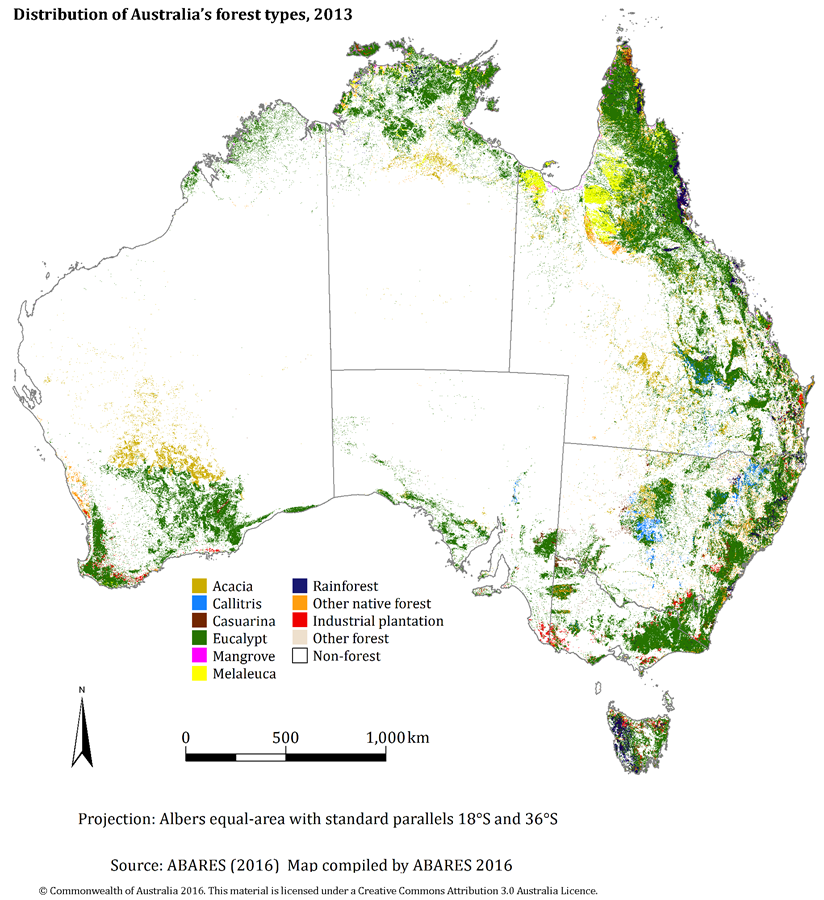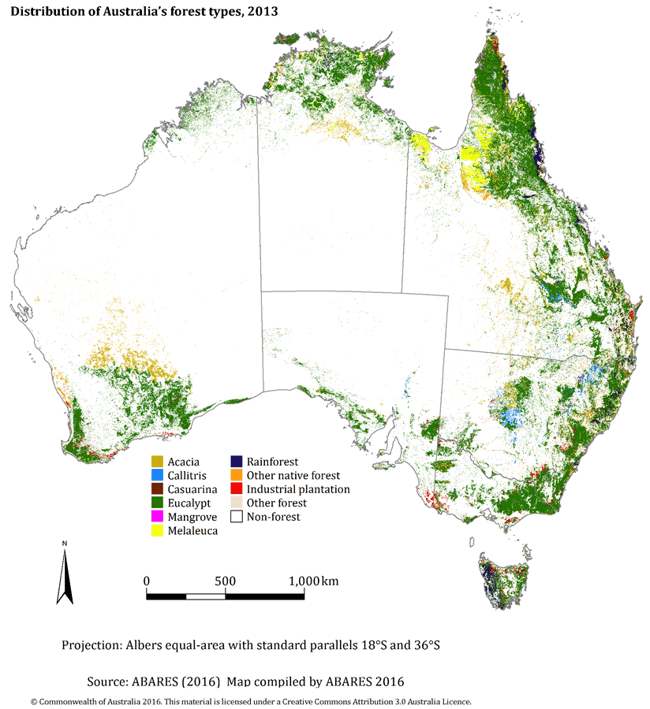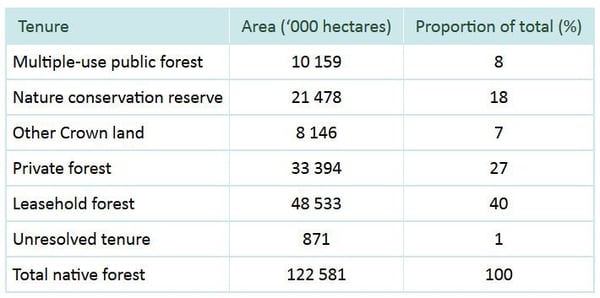2 min read
Australia’s Diverse Forest Industry Part 1: Forest Inventory & Profile
John Greene
:
May 4, 2017

The only sovereign nation that is also a continent, Australia is the sixth largest country in the world. With just over 1.9 billion acres in total land area, Australia is quite large and boasts a distinctive geography and extremely diverse landscape. Due to its unique ecosystems, Australia’s native forests, rainforests and plantation forests tend to be scattered throughout the continent—primarily within close proximity to its vast coastlines.
Australia’s Forest Inventory & Profile
Most of Australia’s forests are located along the northern and eastern coasts, though the southwestern coast also contains forests that extend northward into the Western Australia territory. The island of Tasmania off the southern coast is also heavily forested with stands of industrial plantations and native forests as well as rainforests that cover most of its western coastline. Australia’s total forested area comprises approximately 309 million acres, which equates to roughly 16 percent of the total land area and three percent of the global forest total.

Australia’s native forests cover an area of 304 million acres; of this total, roughly 91 million acres are suitable for commercial wood harvesting. Public native forests comprise roughly 20 million acres, and leaseholder/private native forests comprise roughly 71 million acres of this total.
Australia also has roughly 5 million acres of highly productive industrial plantation forests that have been funded primarily by institutional investors since the mid-1990s. Australia boasts a significant hardwood plantation inventory: Roughly half of its plantations grow various hardwood gum species that are used in the production of pulpwood. The other half of its plantations is comprised of softwoods that are dominated by Radiata Pine.
The total plantation land area has diminished very slightly over the last two years as a result of plantation managers revising their area figures, unproductive plantations being returned to agricultural purposes or the expiration of lease arrangements. In parts of Australia, however, plantations can yield up to 14 times more wood per hectare than native forests, largely due to continued improvements in silvicultural management practices. These improvements are a major reason for the increased wood yields that ensure high-quality and cost-competitive timber products.
In 2014, Australia’s total harvested log volume was 25 million metric tons; plantation harvests totaled 21 million metric tons, and total native forest harvests were 4 million metric tons. Eighty-four percent of the total harvest volume came from plantations, which demonstrates the productivity of its plantation sector.
Australia’s Forest Ownership Profile
Of the 304 million acres of Australia’s native forest, roughly 203 million acres are under some form of private management; 121 million acres are Crown lands operated under private leases, and 82 million acres are lands held under private title. Six ownership classes are used for segmenting native forests in the National Forest Inventory, which are grouped on the basis of being publicly or privately held (with a small area in the “unresolved” category).

Source: Australian Bureau of Agricultural and Resource Economics and Sciences
About 101 million acres of Australia’s native forests are also identified as part of the Indigenous Estate, most of which are located in Queensland and the Northern Territory.
The ownership structure for industrial plantations is different than native forests, as land ownership can differ from ownership of the actual trees on the land, and management arrangements are oftentimes complex. In 2015, 50 percent of the total commercial plantation area was held by institutional investors, 21 percent by government, another 21 percent by private growers, and roughly 5 percent by managed investment schemes (MIS).
Australia’s plantation processing industry comprises a number of large international companies. In recent years, the plantation processing sector has also invested heavily in the development of modernized and efficient sawmills, reconstituted and engineered wood production facilities and efficient pulp mills. Continued development of plantation forests will support further investment in the plantation processing sector, and this investment will assist in developing new export and value-adding industries.
As noted above, plantations produce a majority of the harvested logs in Australia, and the potential supply of coniferous plantation logs is not expected to change significantly over the next 15 - 20 years. Thereafter, the supply should then increase by around 1 million metric tons per year to 2054. The potential supply of coniferous plantation pulpwood is not expected to change significantly for the next few decades.





